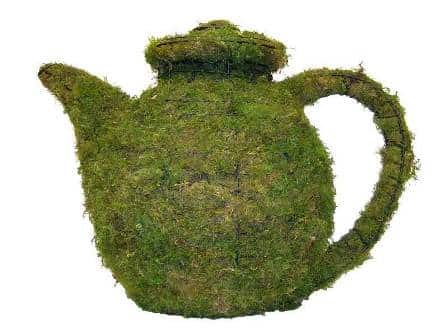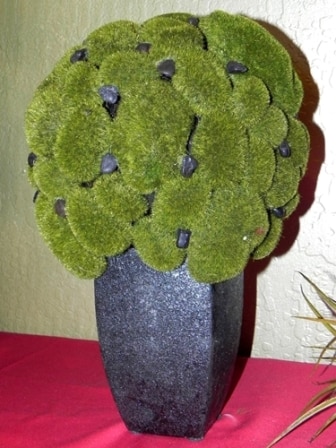One of my absolute favorite crops to grow is potatoes. I love how harvesting them feels like you’re on a treasure hunt. …
Growing plants indoors is even more fun when you grow topiaries. Featuring decorative shapes fashioned out of plants, you can try your green thumb at a wide variety of topiary options, including hearts, spirals, hoops, ovals and cute animals like rabbits, elephants and swans.

The art of clipping evergreen plants into shapes dates back to the 14thCentury when Egyptians and Romans created decorative shapes for their ancient gardens. You can bring topiary to your modern indoor garden by keeping the following tips in mind.
Topiary framing
Topiary frames are generally made of wire. You can easily make a two-dimensional frame such as a heart or hoop, or create a more complex three- dimensional shape such as a cone, ball or animal figure. Plenty of cute frames can also be purchased.
When the frame is complete, insert it in a pot that will accommodate the base of the frame. Ensure that the frame is securely in the pot.
Choosing topiary plants
Several indoor plants, including ivy and moss, respond well to topiary. Good choices include topiary moss and English ivy (Hedera helix). Look for plants with small to medium-sized leaves. Other good choices for topiary include creeping fig (Ficus pumila), hoya, rosemary, creeping thyme, grape ivy (Cissus rhombifolia), pothos and wandering Jew (tradescantia sp.).
Some topiary plants require a sphagnum moss covered frame. Such plants tend to put down clinging roots when they climb and the moss allows them to do that.

Training topiary
Win already growing topiary plants around the frame and secure with green garden tape or plant clips. Small plants will require some time to grow up and onto the frame. As they do so, secure them to the frame. Also make sure to regularly pinch and prune the topiary to shape it. Prune so that the growth is within 1 inch of the frame.
Indoor topiary care
Keep topiary soil evenly moist, but not soggy. Frames made of sphagnum moss require regular misting. If the frame dries out at any point, soak the entire thing in lukewarm water until it’s drenched. Feed topiary plants monthly with a well-balanced organic fertilizer. Also make sure to provide adequate light. Most topiary plants need bright, indirect light or to be grown under artificial lighting. If they don’t get enough light, plants will fail to thrive and grow and may succumb to pests and diseases.
Provide humidity
Topiary plants, such as moss, require humid conditions to thrive. Use a fine mist sprayer or atomizer to moisten the plants throughout the day. Also consider placing the topiary on a humidity tray.
Watch for topiary pests
Spider mites are common in topiary—especially in homes that are hot and dry with poor air circulation. Prevent them from infesting your topiary by keeping the plants well watered and misting regularly. Also open windows to increase air circulation or use a fan. If you find spider mites on your topiary, rinse the plant well and keep repeating every two or three days for a couple of weeks until they are under control.
Send topiary on an outdoor vacation
Many topiary plants ideally require some time outdoors. Once a week spring through fall, place them in a bright shaded area for the day and bring them in at night.
When I was a kid living in rural Massachusetts, there was a lady who lived across the street who had a large …
Many trees and large shrubs require occasional pruning, and late winter in SoCal before early spring’s active growth is often a good …
One of my favorite types of veggies to grow during our cool season are root crops. There is something so exciting about …
